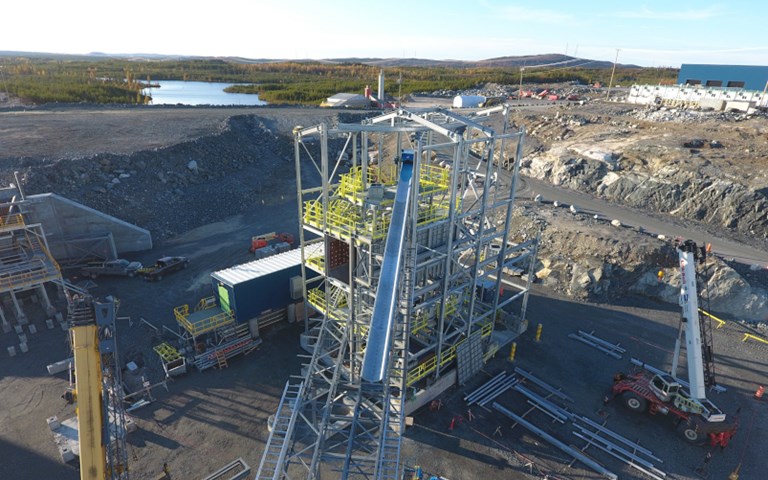Nemaska Lithium's Whabouchi project is one of many lithium project's located in the James Bay region. Courtesy of Nemaska Lithium.
On Feb. 17 the Quebec government and James Bay Cree signed a $4.7 billion memorandum of understanding to facilitate transportation for resource extraction industries, as well as initiatives to improve standard of living and protection of the territory.
The three-phase deal – part of a mandate known as “La Grande Alliance” – is the product of over a year of consultations within the Cree Nation Government and Cree community chiefs, and with the Quebec government. Some of the benefits of the plan include the creation of new jobs, increasing the value of Quebec’s natural resources and “positioning Quebec at the center of the global mining sector, especially [in] lithium.”
“In Quebec , exploration companies have been working with Cree communities for decades,” Valérie Fillion, executive director at the Quebec Mineral Exploration Association, told CIM Magazine. “When we talk about access to the territory, [sharing] the maintenance of existing infrastructures [and constructing needed ones], in a thoughtful way, is important.”
“At this point… this is good news as new territories that are not much, or not explored, will be accessible,” Fillion said. “Access costs for exploration companies will be lower and they will be able to carry out more knowledge-based work.”
There is currently no lithium-producing mine in the James Bay region, though it is home to a number of lithium projects at advanced development stages. Among these are Critical Elements Lithium Corporation and its Rose Lithium-Tantalum project, Galaxy Resources’ James Bay project and Nemaska Lithium’s Whabouchi project.
Related: A novel all-electric graphite mine in Quebec is closer to reality, as the company, Nouveau Monde Graphite, has both a feasibility study and an offtake agreement for its Matawinie project
The railway extension promises to open up the area to increased exploration of resources, and includes 700 kilometres of new railway between Matagami and Whapmagoostui. According to Quebec Premier François Legault, this will not only create more jobs in the Cree community, but will increase the extraction of minerals in the area and serve as an alternative to Chinese imports.
Those operating in Quebec are eager to see more territory become accessible through new infrastructure, though some concerns remain over land protections. According to the CBC, in 2018 the Cree Nation Government identified 80,000 square kilometres, representing 30 per cent of its territory, that it wished to protect from development.
“We have a concern about protected areas with respect to their category and the addition of constraints,” Fillion explained. “There is currently more than 30 per cent of the [territory that is] subtracted or under constraints. It is important to be able to explore the territory, and acquire new geoscientific data in order to avoid subtracting promising future deposits of any kind of minerals.”
The new mandate is an extension on previous treaties between the Cree nation and Quebec governments, beginning with the James Bay and Northern Quebec Agreement in 1975. That was followed by the Peace of the Braves agreement, which the government and Cree nation signed in 2002.
The first of three phases is a multimillion feasibility study which will take place over the next few months. Once complete, the Grande Alliance will begin concrete actions on the mandate as early as 2021.



